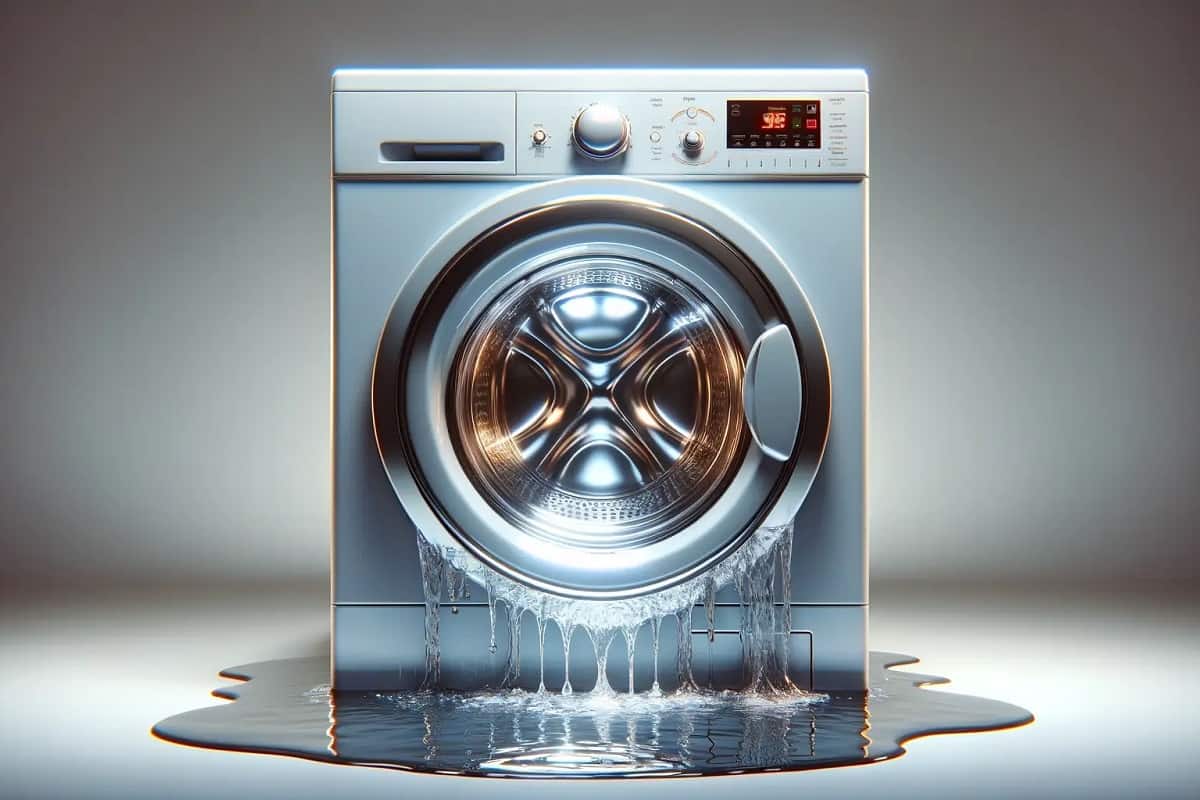Introduction The washing machine is a beloved household appliance that simplifies the arduous task of laundry, helping us maintain clean and fresh-smelling clothes with the touch of a button. However, when this workhorse of the home fails to contain the water within its confines, it can lead to a frustrating and potentially costly problem – the dreaded washing machine leak. Water leaks can not only damage your floors and surrounding areas but also compromise the integrity of the machine itself, leading to further malfunctions and repairs. In this comprehensive guide, we’ll delve into the common causes of washing machine leaking, the steps to identify and address the issue, and the preventative measures you can take to safeguard your home and appliance from the consequences of water escaping its designated boundaries.
Understanding the Causes of Washing Machine Leaking
Faulty Hoses and Connections
One of the most common culprits behind washing machine leaks is the deterioration or improper installation of the water supply hoses. Over time, these hoses can become cracked, worn, or disconnected, allowing water to escape and wreak havoc on your laundry space.
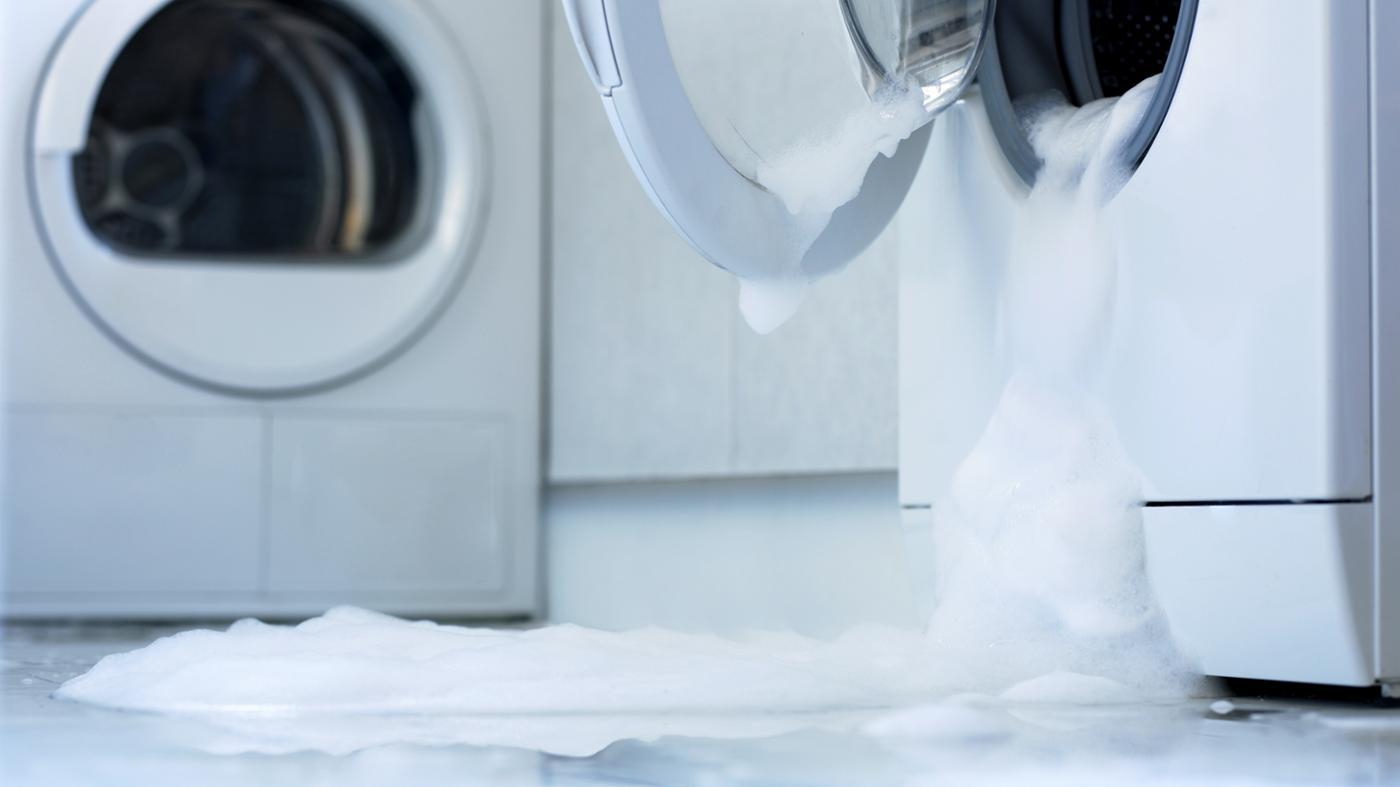
Damaged Seals and Gaskets
The seals and gaskets within the washing machine play a critical role in containing the water during the wash cycle. If these components become worn, damaged, or improperly seated, they can allow water to seep out, leading to leaks.
Overloading and Imbalanced Loads
Excessive loading or an unbalanced distribution of clothes and linens within the washing machine drum can put stress on the machine’s internal components, potentially causing leaks to develop.
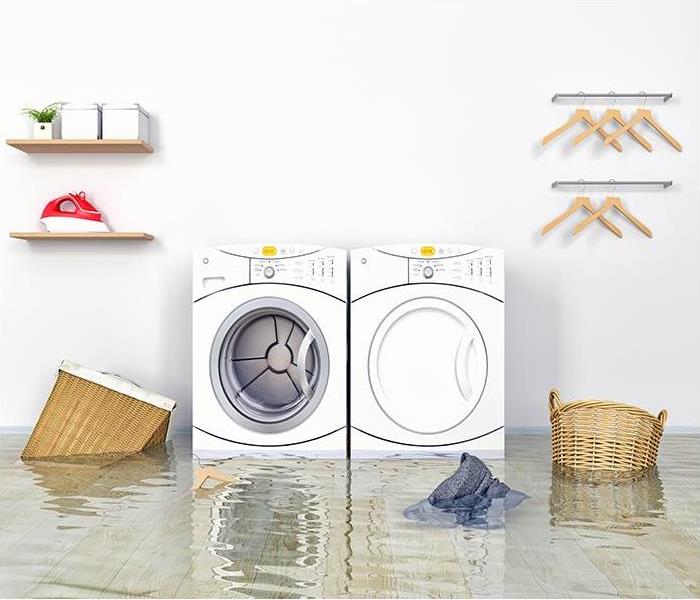
Identifying the Source of the Washing Machine Leaking
Visual Inspection
The first step in addressing a washing machine leak is to conduct a thorough visual inspection of the appliance and its surrounding area. Look for any signs of moisture, dampness, or pooling water, and trace the source back to the specific component or connection that may be the culprit.
Listening for washing machine leaking
In addition to visual cues, you can also use your sense of hearing to detect the presence of a washing machine leak. Listen for the sound of dripping water or any unusual noises coming from the machine during the wash cycle.
Conducting a Water Test
For a more precise diagnosis, you can perform a controlled water test to pinpoint the exact location of the leak. This involves running a wash cycle while closely monitoring the machine for any signs of water escaping its designated pathways.
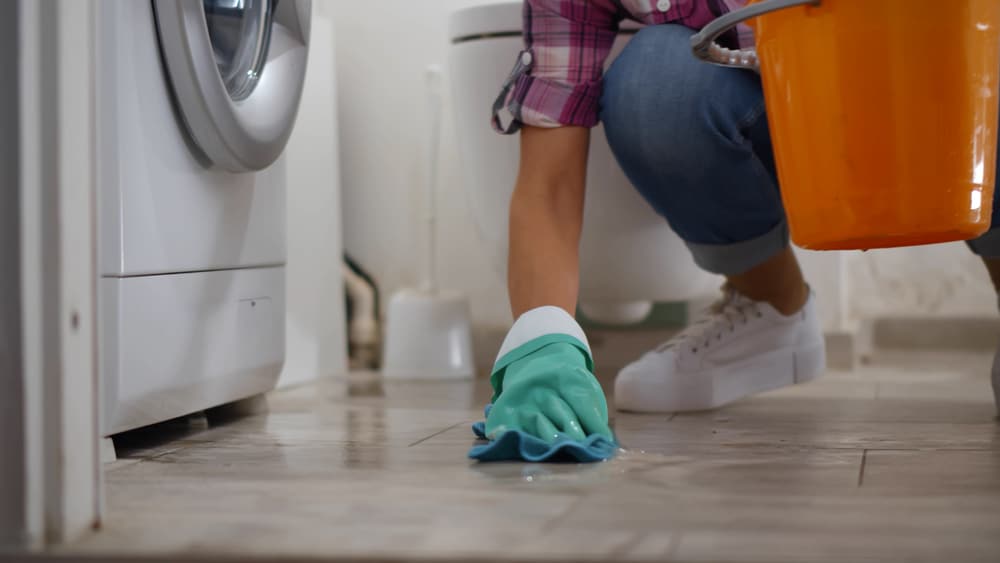
Addressing Washing Machine Leaking
Replacing Hoses and Connections
If the water supply hoses or their connections are identified as the source of the leak, the solution may be as straightforward as replacing these components with new, high-quality parts. Ensure that the new hoses are properly secured and tightened to prevent future leaks.
Repairing or Replacing Seals and Gaskets
When the issue lies with damaged or worn seals and gaskets, you may need to either repair or replace these critical components. Consult your washing machine’s manual or reach out to a professional technician for guidance on the appropriate replacement parts and the proper installation process.
Balancing the Washing Machine Load
If the leak is attributed to an imbalanced or overloaded washing machine drum, adjust your laundry practices to ensure a more evenly distributed load. This can help alleviate the stress on the machine’s internal components and reduce the risk of future leaks.
Preventative Maintenance and Leak-Proofing Strategies
Regular Inspection and Replacement of Hoses
To stay ahead of potential washing machine leaks, it’s essential to routinely inspect the water supply hoses and replace them at the first signs of wear or damage. Consider incorporating this task into your regular home maintenance routine.
Careful Monitoring of Seals and Gaskets
In addition to the hoses, closely monitor the condition of the washing machine’s seals and gaskets, replacing them as needed to maintain a tight, leak-proof seal.
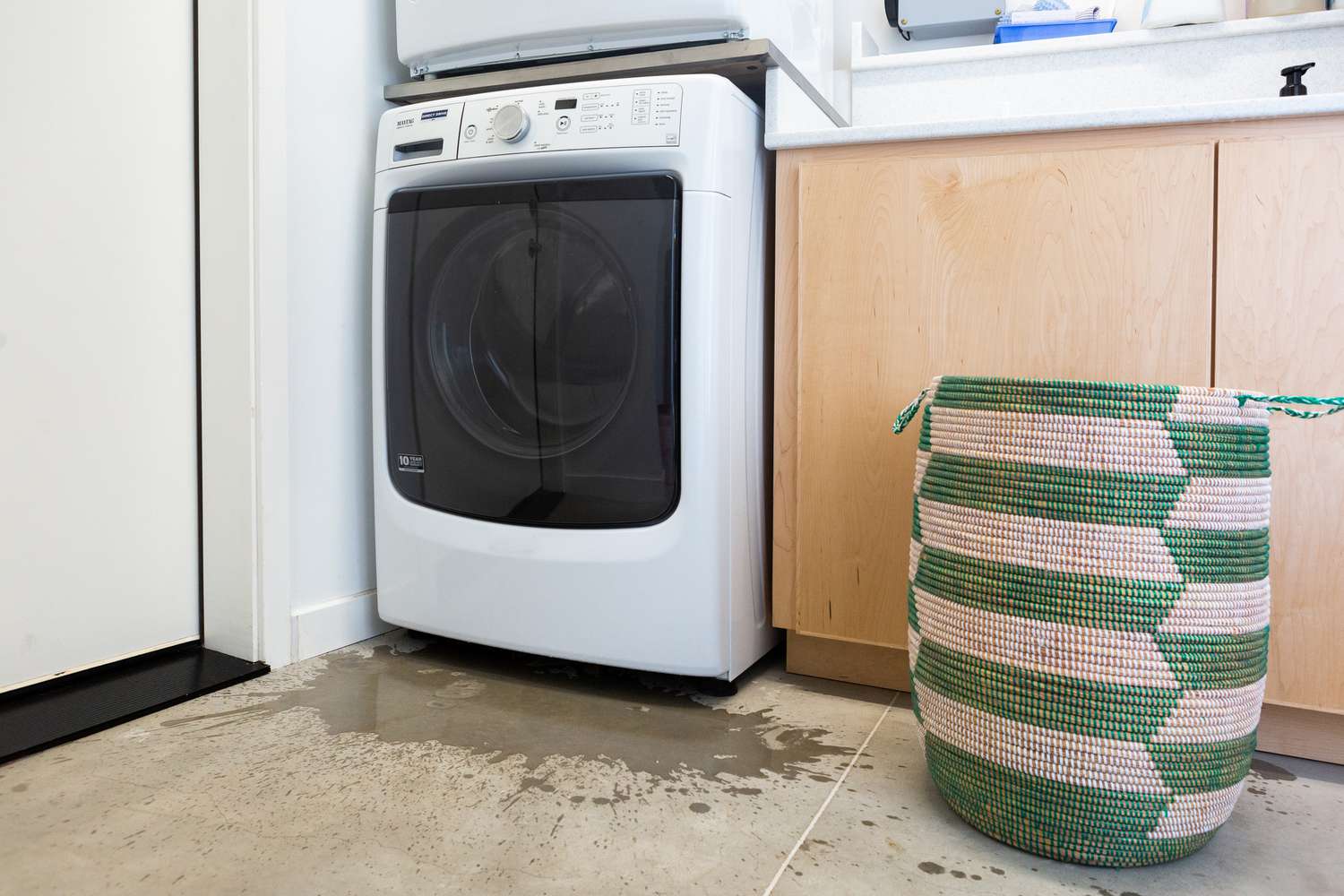
Leveling and Stabilizing the Washing Machine
Ensure that your washing machine is properly leveled and stabilized on a sturdy, level surface. This can help prevent excessive vibrations and stress on the machine’s internal components, reducing the likelihood of leaks.
Addressing Water Damage from Washing Machine Leaks
Mitigating the Immediate Damage
If a washing machine leak has already caused water damage to your floors, walls, or surrounding areas, act quickly to mitigate the immediate impact. This may involve mopping up the excess water, drying the affected surfaces, and addressing any potential mold or mildew growth.
Seeking Professional Assistance
In cases of extensive water damage or if you’re unsure of the full extent of the problem, it’s advisable to seek the assistance of a professional water damage restoration specialist. These experts can assess the situation, implement appropriate drying and remediation methods, and help prevent further damage to your home.
The Importance of Timely Leak Detection and Repair
Preventing Structural Damage
Unaddressed washing machine leaks can lead to significant structural damage to your home, from warping and rotting of wood floors to the deterioration of drywall and other building materials. Promptly addressing any leaks can help safeguard the integrity of your living space.
Avoiding Mold and Mildew Growth
Moisture and standing water created by washing machine leaks can also contribute to the growth of harmful mold and mildew. These fungi can pose serious health risks and cause further damage to your home if left unchecked.
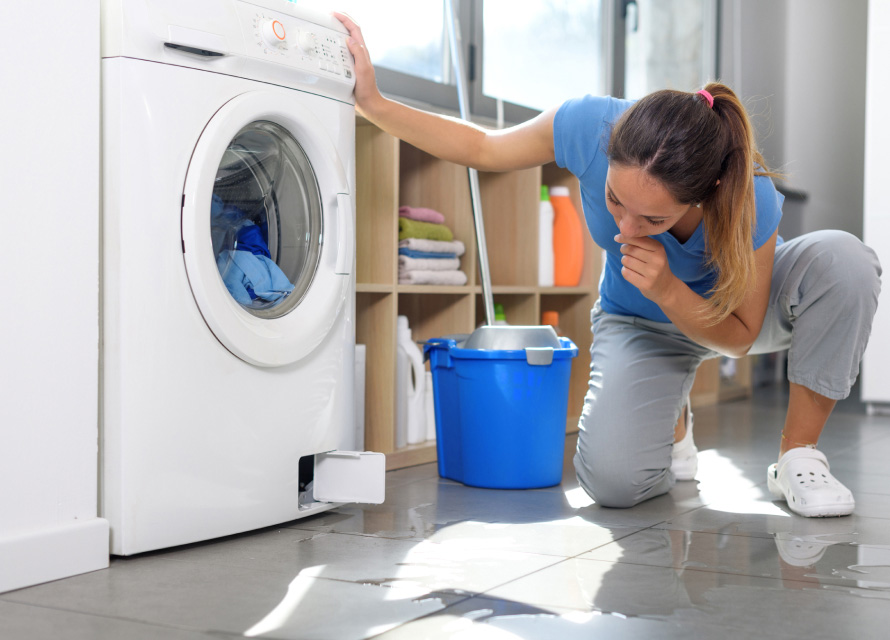
The Financial Implications of Washing Machine Leaking
Increased Utility Costs
Ongoing water leaks from a washing machine can result in higher utility bills, as the machine continues to consume water even when it’s not in use. Addressing the leak can help you avoid these unnecessary expenses.
Costly Repairs and Replacements
Unresolved washing machine leaks can ultimately lead to more extensive and expensive repairs, or even the need to replace the entire appliance. Investing in timely maintenance and leak prevention can save you from these financial burdens.
Conclusion
Washing machine leaks can be a frustrating and potentially costly problem, but with the right knowledge and proactive approach, you can effectively address and prevent these issues from arising. By understanding the common causes of washing machine leaks, implementing proper inspection and maintenance procedures, and acting quickly to address any water escapes, you can safeguard your home, protect your investment in your appliance, and enjoy a worry-free laundry experience. Remember, addressing washing machine leaks is not just about fixing a single problem – it’s about preserving the integrity of your home, minimizing the risk of water damage, and ensuring the long-term performance and efficiency of your beloved laundry companion.

